- Region
- Águilas
- Alhama de Murcia
- Jumilla
- Lorca
- Los Alcázares
- Mazarrón
- San Javier
-
ALL AREAS & TOWNS
- AREAS
- SOUTH WEST
- MAR MENOR
- MURCIA CITY & CENTRAL
- NORTH & NORTH WEST
- TOWNS
- Abanilla
- Abarán
- Aguilas
- Alamillo
- Alcantarilla
- Aledo
- Alhama de Murcia
- Archena
- Balsicas
- Blanca
- Bolnuevo
- Bullas
- Cañadas del Romero
- Cabo de Palos
- Calasparra
- Camping Bolnuevo
- Campo De Ricote
- Camposol
- Canada De La Lena
- Caravaca de la Cruz
- Cartagena
- Cehegin
- Ceuti
- Cieza
- Condado de Alhama
- Corvera
- Costa Cálida
- Cuevas De Almanzora
- Cuevas de Reyllo
- El Carmoli
- El Mojon
- El Molino (Puerto Lumbreras)
- El Pareton / Cantareros
- El Raso
- El Valle Golf Resort
- Fortuna
- Fuente Alamo
- Hacienda del Alamo Golf Resort
- Hacienda Riquelme Golf Resort
- Isla Plana
- Islas Menores & Mar de Cristal
- Jumilla
- La Azohia
- La Charca
- La Manga Club
- La Manga del Mar Menor
- La Pinilla
- La Puebla
- La Torre
- La Torre Golf Resort
- La Unión
- Las Palas
- Las Ramblas
- Las Ramblas Golf
- Las Torres de Cotillas
- Leiva
- Librilla
- Lo Pagan
- Lo Santiago
- Lorca
- Lorquí
- Los Alcázares
- Los Balcones
- Los Belones
- Los Canovas
- Los Nietos
- Los Perez (Tallante)
- Los Urrutias
- Los Ventorrillos
- Mar De Cristal
- Mar Menor
- Mar Menor Golf Resort
- Mazarrón
- Mazarrón Country Club
- Molina de Segura
- Moratalla
- Mula
- Murcia City
- Murcia Property
- Pareton
- Peraleja Golf Resort
- Perin
- Pilar de la Horadada
- Pinar de Campoverde
- Pinoso
- Playa Honda
- Playa Honda / Playa Paraíso
- Pliego
- Portmán
- Pozo Estrecho
- Puerto de Mazarrón
- Puerto Lumbreras
- Puntas De Calnegre
- Region of Murcia
- Ricote
- Roda Golf Resort
- Roldan
- Roldan and Lo Ferro
- San Javier
- San Pedro del Pinatar
- Santiago de la Ribera
- Sierra Espuña
- Sucina
- Tallante
- Terrazas de la Torre Golf Resort
- Torre Pacheco
- Totana
- What's On Weekly Bulletin
- Yecla


- EDITIONS:
 Spanish News Today
Spanish News Today
 Alicante Today
Alicante Today
 Andalucia Today
Andalucia Today
The Augusteum, a Roman temple in Cartagena dedicated to the Emperor Augustus
A temple to elevate the Emperor of Rome to the status of a deity in the city of Carthago Nova
The Romans conquered the Carthaginian city of Qart Hadasht in 209 BC, renaming it Carthago Nova, and almost 150 years later (between 54 and 45 BC) the administrative and economic importance of the city earned it the ranking of an official colony known as “Colonia Urbs Iulia Nova Carthago” (click here for a description of the city and what made it such a prosperous settlement).
This heralded the beginning of a period of urban consolidation in terms of infrastructures and prestigious buildings which reached its peak during the reign of the Emperor Augustus (27 BC – 14 AD) and continued under his successors. The first task was to consolidate the city’s defensive walls, and then a new network of streets was designed to incorporate the topography of Carthago Nova, with five hills acting as natural fortresses on a narrow isthmus of land between the harbour to the south and a saltwater lagoon to the north. (Click here for an overview of the Roman city of Carthago Nova.)
Once this town planning had been implemented all kinds of important buildings were erected to fulfil the administrative, civil, religious and pleasure-seeking needs of the population, and among these was the Augusteum, the remains of which were excavated in the last decade of the 20th century.
The Augusteum
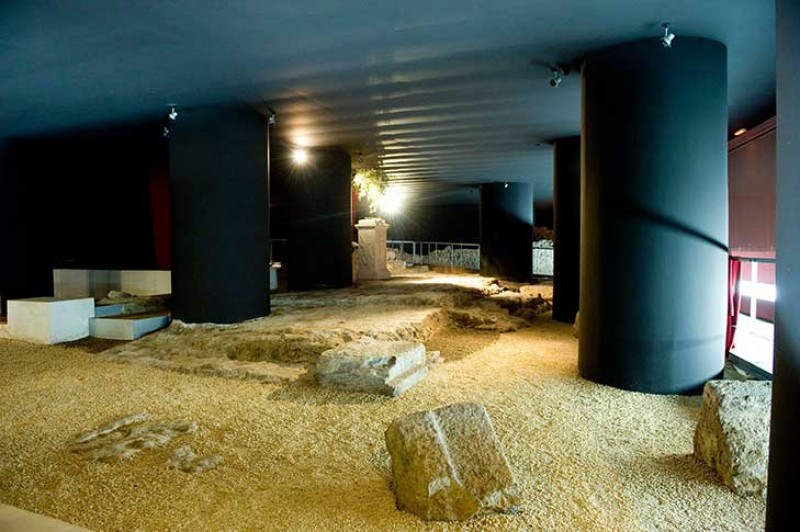
The Augusteum was a collegiate site where people worshipped the Emperor Augustus, and its construction would have been demanded (and probably financed) by the local élite, keen to cement their good relations with the central power of the Empire. At one point it was thought that the Augusteum of Cartagena was built during the reign of the Emperor Tiberius, who succeeded Augustus and reigned until 37 AD, but more recent evidence has pointed to a date in the latter half of the 1st century.
The building was then in use until the 3rd century, after which it was neglected.
The underground site where the remains of the Augusteum can be seen is now a museum where the exhibits begin with displays related to the Roman Forum district, the “nerve centre” of Carthago Nova. The forum itself is believed to have been located in what is now the Plaza de San Francisco, where around a central plaza the buildings included the “capitolium”, a temple devoted to the worship of Jupiter, Minerva and Juno, the “curia” or local senate, where public administrators and traders met, and the Augusteum.
The forum was placed on a series of terraces arranged symbolically, with the temple on the upper level to reflect the superiority of the gods over mere mortals, and the plaza was decorated with a range of statues, plaques and honorary pedestals dedicated to members of the Imperial household and the patrons of the city.
This underlines the fact that more just a meeting place, the Forum was the heart of the city, a symbol of what Roman greatness represented, a place of propaganda which asserted the structure and rigidity of the Roman system and where great displays were made of loyalty to the Emperor and to the holders of the wealth which controlled the politics of the ancient city.
Entrance to the Augusteum complex was via a patio with a portico, and inside were a central room containing the figure of the Emperor flanked by two nymphaeum (possibly housing fountains), two rooms used for rituals of worship and two other rooms. The whole building was richly decorated, with the walls and floors finished in marble imported from a variety of locations in the Roman Empire and an interesting collection of antefixes terminating the covering tiles of the roof. These antefixes were on the side porticos of the patio standing before the temple itself, and while one group represents theatrical masks in a clear reference to the god Apollo the other is related to the theme of victory, with two horns of plenty, marking the triumph secured by Augustus over the forces of Mark Anthony and Cleopatra at the battle of Actium in 31 BC.
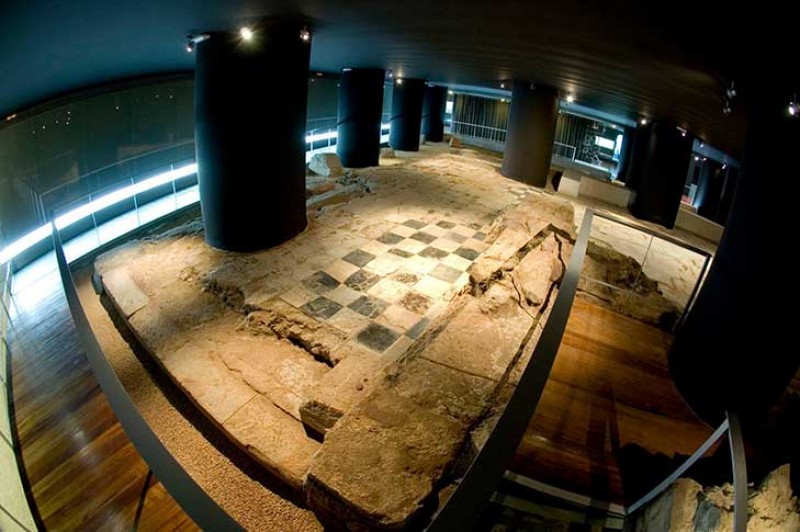
The site ends with the remains of what may have been a double portico leading to an area which could have housed a furtive shrine to Augustus before his worship was officially approved shortly after his death. Reflecting the archaeological wealth of Cartagena, the same area contains a fragment of the defensive wall which was built on the orders of Felipe II in the 16th century.
Within the temple area visitors can see not only the remains of the Augusteum, including various coloured columns belonging to another building, but also a series of informative panels.
The cult of Augustus
In the first century AD, with the transformation of the Roman Republic into the Roman Empire, the 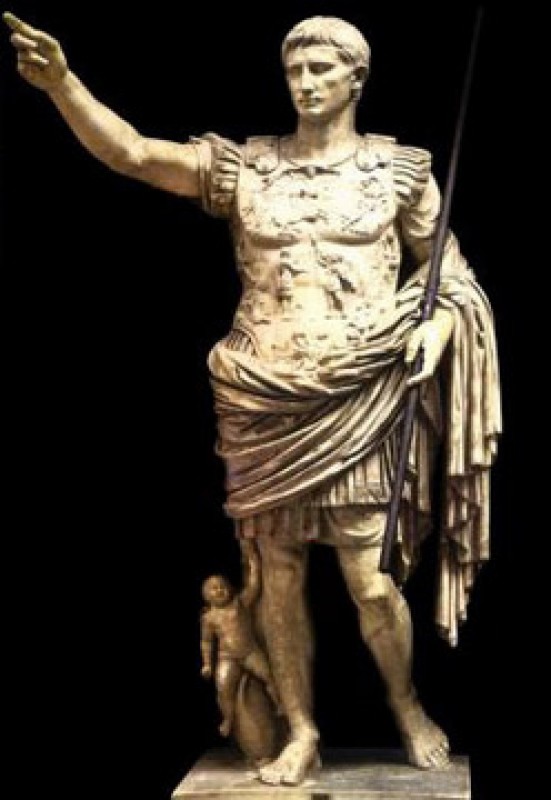 traditional pantheon of gods was amplified to include members of the Julio-Claudian dynasty of Emperors who ruled from 27 BC until 68 BC. Apart from Augustus these were Tiberius, Caligula, Claudius and Nero, and the worship of the Emperors developed from the exceptional “divine figure” of Julius into a large-scale propaganda exercise in which loyalty was given huge importance for obvious reasons.
traditional pantheon of gods was amplified to include members of the Julio-Claudian dynasty of Emperors who ruled from 27 BC until 68 BC. Apart from Augustus these were Tiberius, Caligula, Claudius and Nero, and the worship of the Emperors developed from the exceptional “divine figure” of Julius into a large-scale propaganda exercise in which loyalty was given huge importance for obvious reasons.
This led to large temples being built and religious colleges or cults being established to worship different figures throughout the Empire, and the Augusteum (sometimes referred to as the “Colegio Augustal”) is one example of how the Emperors managed to promote themselves above their people to the level of deities.
Excavation
In preparation for the construction of an apartment block in Calle Caballero excavations were carried out in 1991 and 1992 which stumbled across two buildings related to the forum district of Carthago Nova. After they had been studied under the supervision of archaeologist Luis de Miquel it was decided that they should be preserved in the basement of the new block, and a few years later the area was converted into the museum, which opened in 2002, with architectural adaptations designed by Nicolás Maruri, Atxu Amann and Andrés Cánovas in 2003.
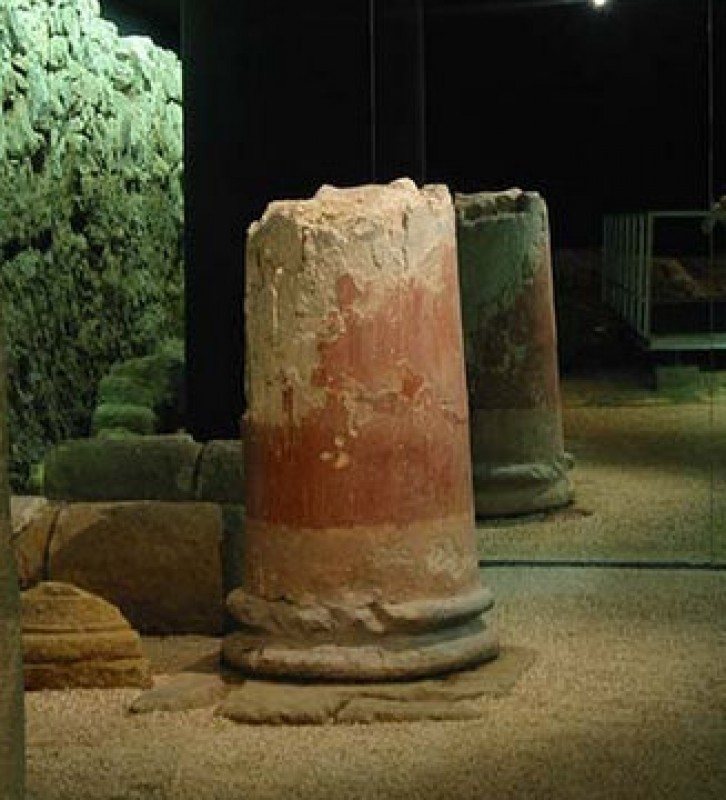 Opening times
Opening times
High season (1st July to 15th September) – Tuesday to Sunday 10.30 to 15.30.
Mid season (15th March to 30th June and 16th September to 1st November) - Saturdays and Sundays 10.30 to 15.30 (from Tuesday to Sunday during Semana Santa, or Easter Week).
Off season (2nd November to 14th March) – Saturdays and Sundays 10.30 to 15.30.
Admission fees
Standard 2.50 euros
Reduced fee 2 euros (online bookings, under 12s, pensioners, students up to the age of 25, unemployed, disabled, large families, groups of 20 or more)
Children aged 3 or under are admitted free of charge.
Location
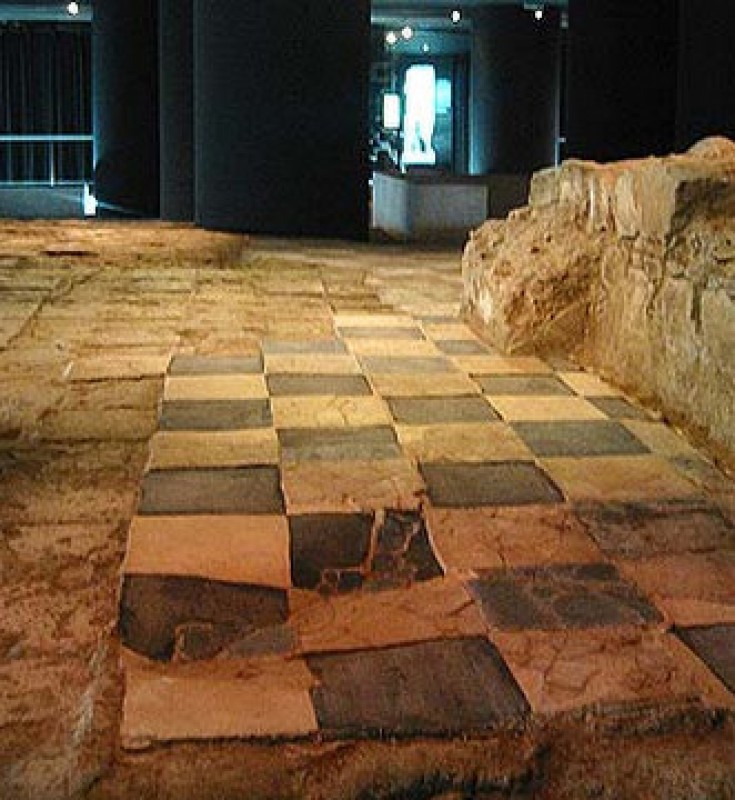 The Augusteum is located in Calle Caballero, very close to the Casa de Fortuna (another element of the Roman heritage of Cartagena) and the Plaza de San Francisco. If approaching from the Casa de la Fortuna walk along Calle Caridad to a striking building which is the headquarters of the annual festival of the Romanos y Carthagineses. Turn left down the passageway at the side of it and the Augusteum is on the left.
The Augusteum is located in Calle Caballero, very close to the Casa de Fortuna (another element of the Roman heritage of Cartagena) and the Plaza de San Francisco. If approaching from the Casa de la Fortuna walk along Calle Caridad to a striking building which is the headquarters of the annual festival of the Romanos y Carthagineses. Turn left down the passageway at the side of it and the Augusteum is on the left.
Access
The site is underground and can only be accessed via stairs, although these are wide and well lit.
Once downstairs there are ramps and the display area is flat and wheelchair / pushchair accessible, but those with a disability may have to be carried down and up. Apart from that, it is practical for those with limited mobility and there are seats and adapted toilets available.
Guide dogs for the blind are admitted with the appropriate accreditation.
For full information in English about the Cartagena municipality CLICK HERE
For full information about places to visit in Cartagena city CLICK HERE




































